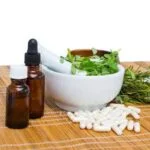Interested in delving deeper into the world of aromatherapy and its benefits? Have you ever wondered what you can learn by becoming certified in aromatherapy? Aromatherapy certification offers individuals the opportunity to gain a comprehensive understanding of essential oils, their properties, and practical applications.
Through a structured curriculum, students are introduced to the history and origins of aromatherapy, exploring how ancient civilizations utilized plants and herbs for healing purposes. The science behind aromatherapy is also a key component of certification programs, providing students with a solid foundation on how essential oils interact with the body to promote overall well-being.
One of the main focuses of aromatherapy certification is understanding essential oils and their unique properties. Students learn about the various extraction methods, chemical compositions, and therapeutic benefits of different essential oils. This knowledge empowers individuals to effectively select and blend oils for specific needs such as stress relief, relaxation, or boosting immunity. Hands-on training sessions further enhance these skills through practical applications like creating custom blends for massage or diffusing essential oils for aromatherapeutic purposes.
History and Origins of Aromatherapy
Aromatherapy, as we know it today, has a rich history that dates back thousands of years. The use of aromatic plants and essential oils for healing purposes can be traced back to ancient civilizations such as the Egyptians, Greeks, and Romans. In fact, the practice of aromatherapy has been an integral part of traditional medicine in many cultures around the world.
One of the earliest recorded uses of aromatherapy can be found in ancient Egypt, where essential oils were used for embalming practices and for treating various ailments. The Greeks and Romans also embraced the therapeutic properties of aromatherapy, using fragrant oils for massages, bathing rituals, and even in religious ceremonies.
Understanding the history and origins of aromatherapy is essential for anyone looking to become certified in this field. By studying the ancient traditions and cultural practices that have shaped aromatherapy over the centuries, students gain a deeper appreciation for the healing power of essential oils and their role in promoting overall well-being.
Moreover, learning about the historical roots of aromatherapy helps practitioners connect with a long lineage of healers who have recognized the benefits of plant-based medicine for centuries.
As aspiring aromatherapists delve into the history and origins of this ancient practice, they gain valuable insights into how different cultures have utilized essential oils for physical, emotional, and spiritual healing. By understanding the roots of aromatherapy, students can better appreciate its significance in modern holistic healthcare practices.
Ultimately, studying the history and origins of aromatherapy provides a solid foundation for individuals seeking certification in this field and equips them with a deeper understanding of the principles that guide this therapeutic practice.
The Science Behind Aromatherapy
Aromatherapy is a holistic healing treatment that uses natural plant extracts to promote health and well-being. It involves the use of essential oils extracted from various parts of plants, such as flowers, leaves, bark, roots, or peels.
These essential oils are known for their aromatic properties and can be used in a variety of ways, such as inhalation, topical application, or through diffusion. In becoming certified in aromatherapy, one delves into the science behind how these essential oils work on the body and mind.
One important aspect of the science behind aromatherapy is understanding how essential oils interact with the body’s olfactory system. When inhaled, these aromatic molecules travel through the nasal passages and stimulate the olfactory receptors. This stimulation then sends signals to the brain’s limbic system, which is responsible for emotions, behaviors, sense of smell, and long-term memory. By understanding this process, certified aromatherapists can recommend specific essential oils to address emotional concerns or promote relaxation.
Furthermore, learning about the chemical components of essential oils is crucial in understanding their therapeutic properties. Different essential oils contain various compounds that contribute to their unique aroma and potential health benefits. For example, lavender oil contains linalool and linalyl acetate, which are known for their calming effects.
On the other hand, peppermint oil contains menthol, which has invigorating qualities. Studying these chemical constituents allows aromatherapists to create personalized blends tailored to individual needs. Through education in aromatherapy certification programs, individuals gain a deeper appreciation for the complex science behind essential oils and their impact on overall well-being.
| Understanding Aromatherapy Science | What It Entails |
|---|---|
| Olfactory System Interaction | The process of how aromatic molecules trigger responses in the brain’s limbic system. |
| Chemical Components Analysis | Studying the unique compounds found in essential oils that contribute to their therapeutic benefits. |
Understanding Essential Oils and Their Properties
When pursuing certification in aromatherapy, one of the fundamental aspects that aspiring professionals delve into is understanding essential oils and their properties. Essential oils are the core components used in aromatherapy, derived from various plant sources through distillation or extraction processes. These volatile oils carry the distinctive scent and therapeutic properties of the plants they are derived from, making them powerful tools in promoting holistic wellness.
To grasp the complexities of essential oils, students in aromatherapy certification programs learn about the different types of essential oils, their chemical compositions, and how each oil interacts with the body on a physical, emotional, and energetic level. Through in-depth study and hands-on practice, individuals gain knowledge about the unique therapeutic benefits each essential oil offers. This includes learning about common uses for specific essential oils, such as relaxation, mood enhancement, pain relief, immune support, and skincare.
In addition to understanding individual essential oils, students also explore how to blend different oils together to create synergistic effects that enhance their therapeutic properties. By learning about blending techniques based on scent profiles, therapeutic benefits, and desired outcomes, individuals can tailor aromatherapy formulations to meet specific client needs. Understanding essential oils and their properties is not only crucial for success in the field of aromatherapy but also ensures safe and effective use of these potent natural remedies.
Practical Applications of Aromatherapy
Aromatherapy, as a holistic healing practice, offers a wide range of practical applications that can benefit individuals physically, mentally, and emotionally. Once you become certified in aromatherapy, you will learn how to apply essential oils through various methods such as inhalation, topical application, and diffuser therapy.
Each method has its own specific benefits and can be tailored to address different health concerns or goals. For example, inhaling essential oils can help with stress relief and emotional balance, while topical application is often used for skin conditions or muscle pain.
Furthermore, in your certification training, you will also learn about the benefits of using specific essential oils for common ailments such as headaches, insomnia, anxiety, and digestive issues. Understanding which essential oils are most effective for particular conditions is crucial in developing personalized aromatherapy blends for yourself or your clients. This knowledge allows certified aromatherapists to create customized treatment plans that cater to individual needs and preferences.
In addition to treating physical ailments, certified aromatherapists also learn about the psychological effects of different essential oils and how they can impact mood, concentration, and overall well-being. By incorporating aromatherapy into daily routines or wellness practices like meditation and yoga, individuals can experience enhanced relaxation, mental clarity, and emotional support. Overall, the practical applications of aromatherapy extend beyond just physical healing to encompass a holistic approach to health and wellness.
| Benefits | Applications |
|---|---|
| Stress relief | Inhalation |
| Muscle pain relief | Topical application |
| Mood enhancement | Diffuser therapy |
Safety Precautions and Guidelines in Aromatherapy
Understanding Safety Precautions in Aromatherapy
When embarking on the journey to become certified in aromatherapy, one of the crucial aspects that you will learn is about the safety precautions and guidelines that must be followed when working with essential oils. Essential oils are potent substances that can have strong effects on the body and mind, making it essential to understand how to use them safely.
Through your certification program, you will learn about the importance of proper dilution, storage, and usage of essential oils to prevent any adverse reactions.
Guidelines for Safe Usage of Essential Oils
In your training towards becoming a certified aromatherapist, you will be taught specific guidelines for the safe usage of essential oils. This includes information on which essential oils should be avoided during pregnancy or certain medical conditions, how to perform skin patch tests to check for allergies, and the correct methods of inhalation or topical application. Understanding these guidelines is crucial in ensuring the well-being and safety of yourself and your clients when incorporating aromatherapy into holistic practices.
Creating a Safe Environment for Aromatherapy Practice
Beyond just knowing how to use essential oils safely, part of your training in aromatherapy certification will also include creating a safe environment for practice. This involves knowledge about proper ventilation during diffusing sessions, maintaining cleanliness in workspaces to prevent contamination, and being aware of potential hazards such as photosensitivity reactions from certain oils. By learning these safety precautions and guidelines, you will be equipped with the necessary skills to provide effective and safe aromatherapy treatments.
Hands-on Training and Practice Sessions
During these training sessions, students may work with experienced instructors who guide them through the process of selecting appropriate essential oils for specific ailments or conditions. They learn to create custom blends tailored to individual needs and preferences, as well as explore different application methods such as inhalation, topical application, and diffusion. By actively participating in these practice sessions, aspiring aromatherapists gain confidence in their abilities and build a solid foundation for their future practice.
Additionally, hands-on training often includes supervised practice with clients to further enhance practical skills and gain valuable feedback from both instructors and recipients of the aromatherapy treatments. This real-world experience allows students to refine their techniques, improve their communication with clients, and understand the importance of creating a safe and comfortable environment during aromatherapy sessions.
Overall, hands-on training is an integral part of the certification process that equips individuals with the necessary skills and expertise to become successful aromatherapists.
The Importance of Certification in Aromatherapy
When considering a career in aromatherapy, obtaining certification is crucial to ensuring that you have the knowledge and skills necessary to practice safely and effectively. Through a comprehensive certification program, individuals will gain a deep understanding of the principles and practices of aromatherapy, as well as learning about the history and origins of this ancient healing art. This includes exploring how different cultures have used plants and essential oils for therapeutic purposes throughout history.
One of the key aspects of becoming certified in aromatherapy is gaining an understanding of the science behind how essential oils work and their effects on the body and mind. Students will learn about the chemical compounds found in different essential oils, their therapeutic properties, and how they can be used to promote physical, emotional, and mental well-being.
By delving into the scientific basis of aromatherapy, individuals can develop a solid foundation for creating effective blends and treatments for clients.
Additionally, certification programs also cover practical applications of aromatherapy, including methods of extraction, blending techniques, and different ways to use essential oils for various health concerns. Students will have hands-on training opportunities to practice creating their own blends, conducting client consultations, and providing aromatherapy treatments. This practical experience is invaluable in preparing individuals to work professionally in the field of aromatherapy and provide safe and effective care for their clients.
Continuing Education and Advanced Training Opportunities
In conclusion, becoming certified in aromatherapy is a comprehensive journey that equips individuals with a deep understanding of the history, science, and practical applications of essential oils. Through hands-on training and practice sessions, students learn how to safely and effectively use aromatherapy to promote overall well-being.
The importance of certification in aromatherapy cannot be understated, as it not only validates one’s knowledge and skills but also ensures that professionals adhere to safety precautions and guidelines in their practice.
Moreover, continuing education and advanced training opportunities play a crucial role in further enhancing one’s expertise in aromatherapy. By staying updated on the latest research, trends, and techniques in the field, certified professionals can continue to expand their knowledge and better serve their clients. These opportunities provide a platform for ongoing growth, allowing individuals to delve deeper into specific areas of interest or specialization within aromatherapy.
In essence, what you learn by becoming certified in aromatherapy goes beyond just theoretical knowledge; it encompasses practical skills, safety measures, and a commitment to continuous learning. Aspiring practitioners who embark on this certification journey not only gain valuable insights into the therapeutic benefits of essential oils but also develop the proficiency needed to make a positive impact on the health and wellness of others.
Ultimately, achieving certification in aromatherapy opens up a world of possibilities for those passionate about holistic healing and natural remedies.
Frequently Asked Questions
What Does a Certified Aromatherapist Do?
A certified aromatherapist is a professional who uses knowledge of essential oils to promote health and well-being. They work with clients to create personalized blends for various physical and emotional issues. Aromatherapists may offer consultations, conduct classes, or even create products like lotions or perfumes.
Is an Aromatherapy Certification Worth It?
The value of an aromatherapy certification depends on individual goals and aspirations. For those looking to pursue a career in aromatherapy or enhance their existing practice, certification can provide credibility and specialized knowledge.
It can open up opportunities for working in spas, wellness centers, or starting a private practice. However, if you’re simply interested in using essential oils for personal use, certification may not be necessary.
How Long Does It Take to Become a Certified Aromatherapist?
Becoming a certified aromatherapist typically requires completing an educational program that ranges from 200 to 500 hours of training. The length of time it takes to become certified can vary depending on the program’s structure (full-time versus part-time) and your own pace of study.
Some programs can be completed in a matter of weeks or months, while others may take up to a year or more to finish. It’s important to choose a program that aligns with your schedule and learning preferences for the best outcome.

Are you looking for a natural way to improve your health and wellbeing?
If so, aromatherapy may be the answer for you.





